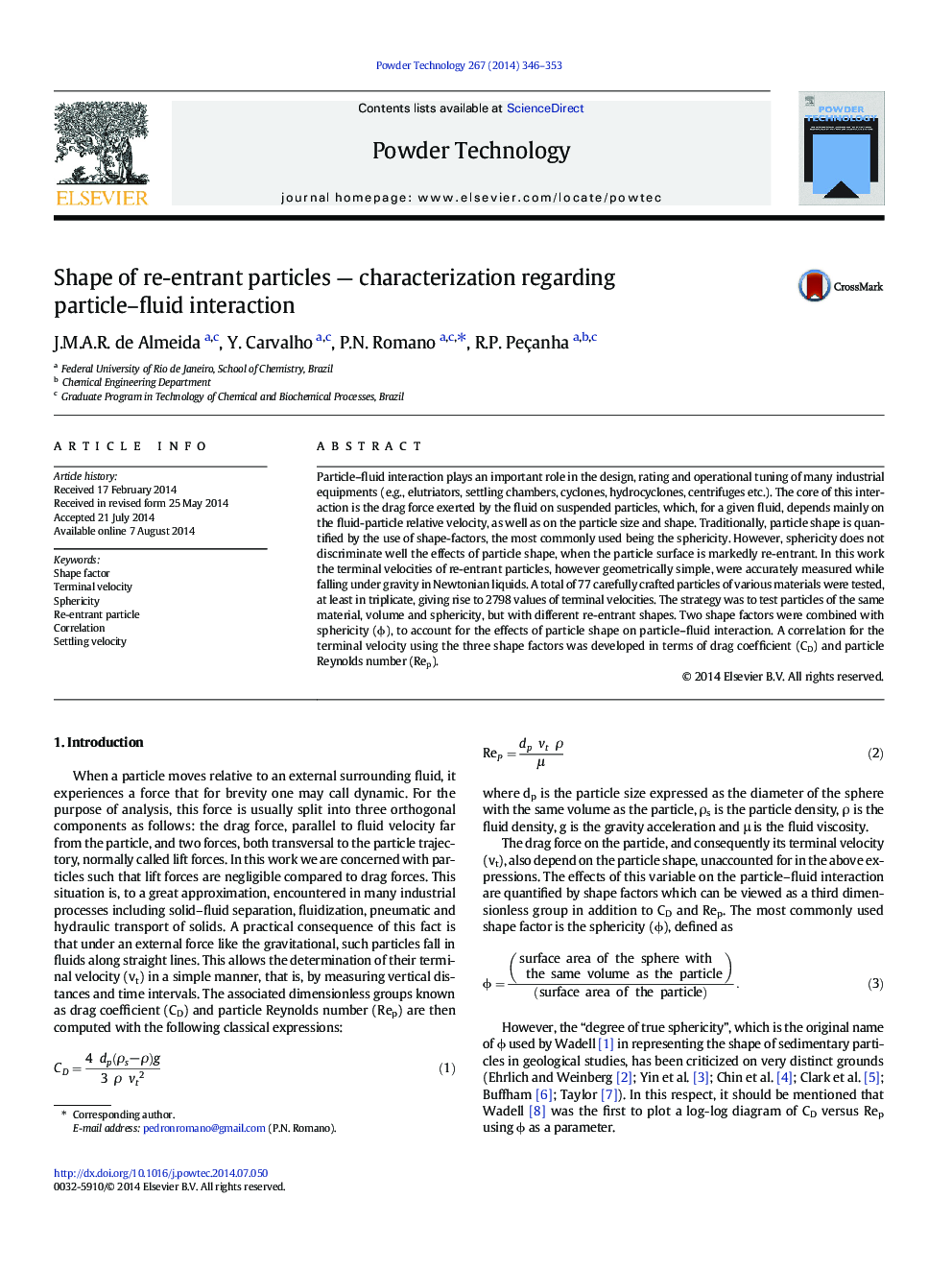| Article ID | Journal | Published Year | Pages | File Type |
|---|---|---|---|---|
| 236030 | Powder Technology | 2014 | 8 Pages |
•Sphericity does not discriminate well the effects of re-entrant particles.•A new correlation for the terminal velocity of re-entrant particles was developed.•Actual particle terminal velocity and model based estimations are compared.
Particle–fluid interaction plays an important role in the design, rating and operational tuning of many industrial equipments (e.g., elutriators, settling chambers, cyclones, hydrocyclones, centrifuges etc.). The core of this interaction is the drag force exerted by the fluid on suspended particles, which, for a given fluid, depends mainly on the fluid-particle relative velocity, as well as on the particle size and shape. Traditionally, particle shape is quantified by the use of shape-factors, the most commonly used being the sphericity. However, sphericity does not discriminate well the effects of particle shape, when the particle surface is markedly re-entrant. In this work the terminal velocities of re-entrant particles, however geometrically simple, were accurately measured while falling under gravity in Newtonian liquids. A total of 77 carefully crafted particles of various materials were tested, at least in triplicate, giving rise to 2798 values of terminal velocities. The strategy was to test particles of the same material, volume and sphericity, but with different re-entrant shapes. Two shape factors were combined with sphericity (ϕ), to account for the effects of particle shape on particle–fluid interaction. A correlation for the terminal velocity using the three shape factors was developed in terms of drag coefficient (CD) and particle Reynolds number (Rep).
Graphical abstractFigure optionsDownload full-size imageDownload as PowerPoint slide
